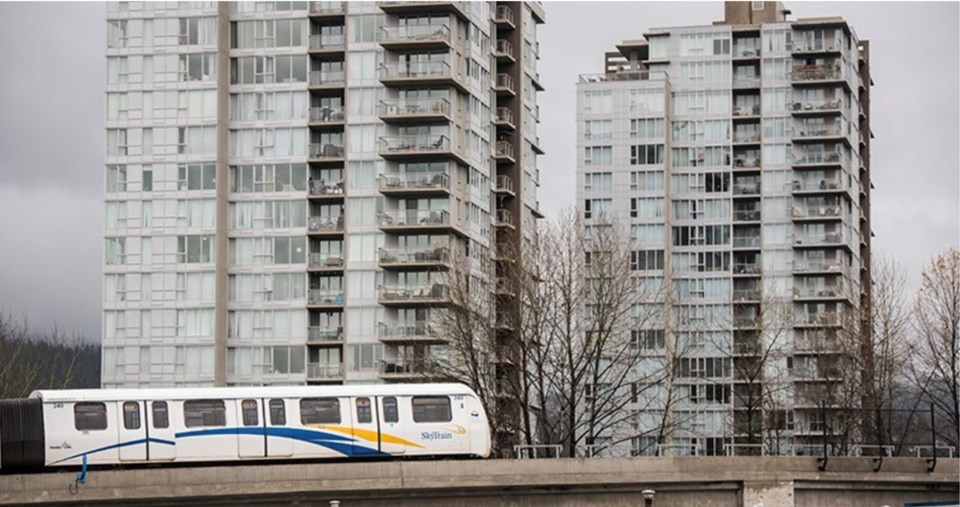New provincial legislation mandating housing unit minimums for single-family and duplex lots in close proximity to transit, as well as higher density near mass transit stations, will have a “significant” effect on how Port Moody grows and functions.
That's according to a report that'll be presented in a special meeting of city council tonight, June 18.
While it recommends council adopt the zoning bylaw amendments to accommodate the new rules prior to the June 30 deadline set by the province, several questions and concerns about the legislation remain unaddressed.
Among the issues raised by the report’s authors, that include city staff as well as consultants, are:
- the broad-brush approach of the legislation has resulted in land-use and zoning boundaries that can be illogical and confusing
- the tight timeline for local governments to implement the legislation will likely cause oversights and inaccuracies requiring future corrections to bylaws
- the top-down nature of the legislation doesn’t account for local consultation to “a very significant planning legislative change”
Port Moody on target to meet first year of housing targets — after that, uncertainty abounds https://t.co/3LAffbLWN8
— Tri-City News (@TriCityNews) May 13, 2024
The report acknowledges Bill 44, which will allow a minimum of six housing units to be constructed on single family lots greater than 280 sq. m. within 400 metres of a prescribed bus stop that is served at least every 15 minutes between 7 a.m. and 7 p.m. on weekdays and 10 a.m. to 6 p.m. on weekends, will “have some potential positive outcomes of the community,” including the opportunity to construct more ground-oriented and diverse housing “to meed the needs of a range of household composition.”
Properties further away from a prescribed bus stop but greater than 280 sq. m. in size will be allowed at least four units of housing and properties less than 280 sq. m. will be able to accommodate at least three homes.
According to the report, the new rules would apply to every residential property in Port Moody, save for nine protected by heritage designation or a heritage revitalization agreement, as well as those already in a transit oriented development area.
Still unclear, said the report’s authors, is whether cities can establish minimum unit sizes for those extra homes, the application of fire safety regulations like the installation of sprinkler systems, how tree canopies can be preserved and the impact on municipal infrastructure and civic facilities.
“Will provincial government funding be made available to help cover the capital infrastructure project costs necessary to support this growth?” asked the authors, adding that infrastructure ranges from transportation networks to the city’s sanitary and storm water management systems.
Even the amount of water pressure in fire hydrants will need to be increased, said the report.
“Without knowing which properties will adopt the provincial change, the city will need to ensure that all fire hydrants in Small-Scale Multi-Unit Housing (SSMUH) zones are now capable of delivering the increased fire flow.”
As well, the inflexibility of some of Bill 44’s provisions doesn’t account for the actual walking distance residents would have to the nearest prescribed bus stop nor for inequities created for landowners when the zoning rules change mid-block.
“Staff anticipate receiving enquired from owners questioning why some of their neighbours in the same block are entitled to six units and they are only entitled to four units,” said the report.
As for Port Moody’s transit oriented areas from Moody Centre to Coronation Park that would be impacted by Bill 47 mandating new density requirements depending on a property’s distance from the Moody Centre and Inlet Centre SkyTrain stations, the report identified similar concerns new growth will have on infrastructure such as the impact the province’s removal of parking requirements for new developments will have on the city’s ability to negotiate additional amenities that could support alternative transportation modes like car shares, transit passes and cycling facilities.
According to Bill 47, residential and mixed-use properties within 200 metres of a mass transit station will be required to accommodate development of at least 20 stories, while those from 201 to 400 metres away will be mid- and high-rises of at least 12 storeys and mid-rises of at least eight storeys will be built in areas from 401-800 metres away.
The report’s authors said even as council passes the zoning amendments to meet the June 30 deadline, work will continue to achieve more clarity from the provincial government as well as update it official community plan and housing needs report to reflect the impacts of the legislation along with other policies and bylaws like its community amenity and density bonus programs, fees and solid waste bylaws,
The provincial government passed the new legislation late last year to address the housing crisis after identifying several communities — including Port Moody — it said weren't building enough housing quickly.
Port Moody mayor anticipates new housing legislation will create 'bumps in the road' https://t.co/phHFf7bHQV
— Tri-City News (@TriCityNews) December 14, 2023





